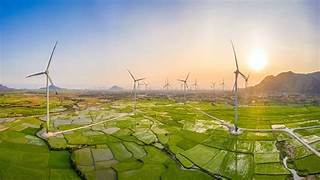Vietnam’s renewable energy sector faces uncertainty as sudden policy shifts threaten billions in investments. Vietnam’s solar and wind sectors are at a crossroads. Investors worry about sudden policy shifts that could jeopardize billions of dollars’ projects. A recent industry letter brought the matter to the fore, urging the government to reconsider its plans. This is what is occurring and why it matters.
A $13 Billion Risk
More than $13 billion in solar and wind investments could be at risk, according to a letter signed by 28 investors, including Adani Green Energy and Dragon Capital. Dated March 5, 2025, and reviewed by Reuters, the letter warns Vietnamese leaders about the fallout from retroactively changing subsidized energy prices. These investors, both local and international, fear that altering agreed-upon tariffs could destabilize the sector. Projects with a combined capacity of nearly 4 gigawatts (GW), mostly solar, are funded by foreign investors alone, valued at $4 billion.
Why the Concern?
Vietnam’s renewable energy boom was fueled by generous feed-in tariffs. These deals promised state utility EVN would buy electricity at above-market rates for 20 years. Now, the government is considering scrapping or revising these terms. Investors say this move threatens financial stability. “Multiple projects are facing loan defaults to both local and international lenders,” the letter states. EVN has already paid partially or delayed payment, leaving projects in limbo.
A Blow to Confidence
The timing is poor. Vietnam is planning to add greater renewable capacity in a new power plan for this decade. But investors are asserting that altering the rules now would undermine confidence. “A permanent revision or revocation of tariffs agreed upon poses the risk of undermining national banking stability and degrading confidence in Vietnam’s regulatory framework,” the letter says. For a nation that has managed to attract companies from Thailand, Singapore, and the Netherlands, this could derail future investments.
- Economic Impact: More than $13 billion in investments are on the line, driving growth and jobs.
- Energy Goals: Vietnam aims to increase solar and wind energy, but policy uncertainty may slow momentum.
- Global Reputation: A stable regulatory framework is key to maintaining international players’ interest.
The Bigger Picture
Vietnam’s renewable sector expanded dramatically in the past few years. Solar and wind schemes prospered due to those profitable tariffs. With EVN now being in arrears on payments, the government has unappetizing options. Investors are claiming that it is important to honor commitments already undertaken. They emphasize that payment delays already make projects default. Changing rules ex post facto guarantees that the blowback may reach banks and well into society.
The letter is blunt. Signed by hefties such as ACEN of the Philippines and Chinese firms, it is a testament to the prevalent nervousness. “We are expressing deep alarm at the potential demise of preferential energy tariffs,” the investors wrote. They’re not concerned about money—they view this as a test of Vietnam’s commitment to clean energy.
Looking Ahead
Vietnam’s green goals are obvious, but it is action that speaks louder. Not surprise, but certainty, is what investors are seeking. The government is keeping quiet for now, but the stakes are gigantic. With billions already in play and more capacity on the horizon, the next move will determine the country’s energy future—and its reputation with global partners. For now, the industry holds its breath in anticipation.

